CIA Sponsored Terror, Civil Liberties, FBI Intrusion, Habeas Corpus, Human Rights, Political Prisoner, Prison Industry, Surveillance, War Resister
Podcast: Play in new window | Download
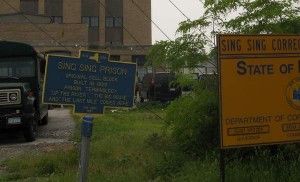
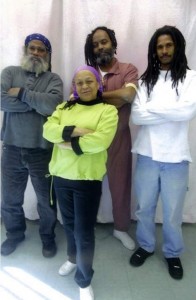
Mass Incarceration Epidemic
On January 19, the Malcolm X Commemoration Committee 1199 SEIU activists presented the 17th Annual Dinner Tribute to the Families of our Political Prisoners & Prisoners of War. It was called Transforming Solidarity: Working Together to End Political Imprisonment and Mass Imprisonment and was held at the Martin Luther King, Jr. Labor Center in NYC.
Professor Johanna Fernandez:
- The Republican Party begins to craft an ideological backlash against an emerging civil rights and black power movement.
- The Republican presidential candidate at the time Barry Goldwater in a speech begins to link crime to the activism of civil rights protesters that are being incarcerated in the south.
- He is deploying one of the most atrocious fears of the white supremacist South in the post-reconstruction era to delegitamize these protests. That black men are going to rape white women.
- What we see happening in the 1960s is that fear is manufactured by these P.R. firms that are working in consultation with Republican leaders but also with police organizations, the Fraternal Order of Police, and the Police Benevolent Association.
- 1968 saw and huge amount of riots especially in the aftermath of Martin Luther King Jr’s assassination.
- The criminalization of black and Latino protesters was the major strategy used to delegitamate the aspirations and the politics of this emerging revolutionary class.
- The Omnibus Crime Control and Safe Streets Act of 1968 legalized wire-tapping and bugging by federal agents and local police without a court order.
- It also legalized on the stop search and seizure by police.
- The police are exempt from the 1964 Civil Rights Act.
- What is the purpose of this crime mania and moral panic? It’s to delegitamize the influence of black and Latino radicals of the working class of color in the nation.
- In 1970s, the apparatus of mass incarceration emerges.
- This apparatus is being deployed against the most vulnerable sections of American society in urban centers. African-Americans and Latinos that are being devastated by a crisis of de-industrialization.
- The poorest people of color are likely to resist, and this class is going to be controlled.
- It was a fabricated crisis of crime that never existed.
- Fear atomizes people they don’t start thinking in terms of community but individual.
- Crime becomes a code word for African Americans, Latinos and increasingly immigrants.
- The Black Panther Party had an analysis of oppression and inequality that addressed its root causes. It identified capitalism which is driven by profit rather than need as the problem.
- But also they had a newspaper and this is important around the issue of mass incarceration.
- Crime is an ideological wedge that is crafted by the Republican Party and the new Right in this nation for the purposes of social control.
Guest – Johanna Fernández, a native New Yorker. She received a PhD in History from Columbia University and a BA in Literature and American Civilization from Brown University. Professor Fernández teaches 20th Century U.S. History, the history of social movements, the political economy of American cities, and African-American history. She has previously taught at Carnegie Mellon University in Pittsburg, PA and Trinity College in Hartford, CT and is, most recently, the recipient of a Fulbright Scholars grant to the Middle East and North Africa that will take her to Jordan in spring 2011, where she will teach graduate courses in American History.
—-
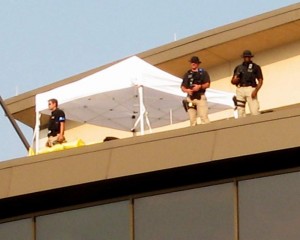

Policing Trends at National Special Security Events
On January 21, 2013, more than 3 thousand law enforcement officers and nearly 13 thousand military troops were activated and deployed to the Washington Mall. This magnitude of security at President Barack Obama’s 2013 inauguration raised the water mark of militarized police mobilization for National Special Security Events (NSSEs) High tech weaponry, mobile checkpoints and a large uniformed presence have become common sights at major sporting events, nominating conventions and international summits. NSSEs were created under President Bill Clinton, a designation that requires federal and local law enforcement to collaborate on event security under the management of the Secret Service. The report was issued by the National Lawyers Guild on NSSE trends is the Guild’s senior researcher.
Traci Yoder:
- The idea that this much security, this kind of multi-level, multi-agency is necessary is the assumption that these events are high profile, will have a lot of people and therefore are likely targets for terrorist attacks.
- There’s been about 40 NSSE’s since the designation was created and these include events like president inaugurations, state funerals, the annual State of the Union address, the Superbowl, Olympics, all International monetary organization meetings and of course the Democratic and Republican National Conventions.
- All to often we’re finding that protesters who are engaging in constitutionally protected and legitimate protest activities are lumped into this security threat.
- Over time, we’ve (NLG) have not only done legal support, we’ve also done a lot of research and writing and analysis of the different kinds of trends we see evolving.
- We wanted to use the RNC and the DNC in 2012 as case studies to look at some disturbing changing trends and express our concern that these security measures are simply becoming more normalized.
- Several months before an NSSE, the local government overrides city codes to create exceptional circumstances for these particular events. That means creating a security zone around the event itself, then limiting How When and Where people can protest within that zone.
- That can lead to limiting the times of demonstrations, the amount of people, the special permitting processes to prohibiting everyday, household items being allowed in the zone.
- What we see leading up to NSSE and this has been very consistent is the DHS and FBI circulating unsubstantiated reports that violent anarchists and outside agitators are plotting to come to these cities really to cause harm and injury – to bring explosive devices, to injure police.
- FBI informants and agents and undercover police were crucial to both encouraging and helping to set up these plots which they then use as evidence later.
- We’re asking law enforcement to stop spreading these unsubstantiated threats of protester violence before NSSEs and acknowledge that most of the violence that has taken place at NSSEs in the past has been on the part of police and not the protesters.
- The combined total of the security budget for the RNC and DNC was 100 million dollars. 50 million dollars going to each city.
- We see the continuation of the militarization of police departments and the NSSEs are playing a part in them.
Guest – Traci Yoder, National Lawyers Guild senior researcher. Before coming to the National Office, she coordinated the NLG Philadelphia Chapter. She holds master’s degrees in Library and Information Studies and Anthropology, with a focus in the latter degree on gender studies and East Africa. In Philadelphia, Traci worked on many projects in addition to the NLG, including the Wooden Shoe Book Collective and the Radical Archives of Philadelphia.
CIA Sponsored Terror, Civil Liberties, Criminalizing Dissent, FBI Intrusion, Green Scare, Habeas Corpus, Human Rights, Political Prisoner, Prison Industry, Supreme Court, Targeting Muslims, Truth to Power
Podcast: Play in new window | Download
Updates:
- Chile: 40 Years Later Eight Former Army Lieutenants Charged in the Killing of Communist Performer/Songwriter Victor Jara.
- Heidi Boghosian and Johanna Fernandez Visit Mumia Abu-Jamal During Holidays
- Death Penalty States In The United States Update
- Jeremy Hammond’s Judge Refuses To Recuse Herself : Contrary to what has been reported on Democracy Now and Law and Disorder, a motion has been filed (not ruled) for the judge to recuse herself.
——-
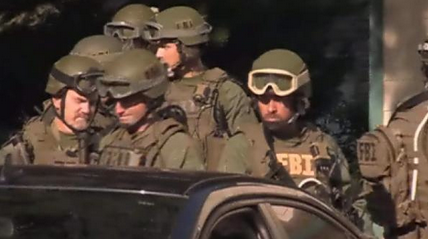

FBI Considers The Occupy Movement A Terrorist Threat: The State of Civil Rights and Public Policy
A few weeks ago the Partnership for Civil Justice Fund released secret documents obtained by Freedom of Information Act requests revealing that the Occupy movement was treated as a terrorist threat by the FBI. This is despite agency acknowledgement that the organizers called for peaceful protests. The documents also show massive resources used to track the Occupy movement, a month prior to the encampment in Zuccotti Park. FBI and counter-terrorism agents in offices across the country, from Anchorage to Jacksonville, to Tampa, Virginia, Milwaukee, Birmingham, Memphis and Denver, coordinated with various local and federal law enforcement, to monitor and collect intelligence on OWS. The documents obtained by the PCJF are heavily redacted and the tip of the ice berg says our guest attorney Mara Verheyden Hilliard. We also talk with Mara about her thoughts on the state of civil rights for the year moving forward.
Attorney Mara Verheyden-Hilliard:
- The Partnership For Civil Justice Fund filed a series of Freedom of Information Act requests with federal agencies, as well as with municipalities and police departments around the country.
- Prior to the FBI materials we have obtained a lot of documents showing the Department of Homeland Security’s involvement as well as local police involvement around the country.
- It doesn’t come as a shock to people that the FBI has continued unabated its historic role as the secret police in the United States, acting against the social justice movement in the US.
- The documents also show us this deep and close partnership the FBI and DHS have with Wall Street, and with the banks and businesses in the United States.
- The documents show the U.S. intelligence agencies and supposedly security agencies really working as the private intelligence arm for private businesses.
- You have the people in the United States rising up in opposition to an economic devastation caused by the banks and by Wall Street and the U.S. government acting in partnership with the banks and Wall Street against those people.
- These documents show for example the FBI was communicating with the New York Stock Exchange in August of 2011, a month before the first tent was set up in Zucotti Park.
- One of the documents we have involves the Domestic Security Alliance Council, where they’re planning on the West Coast port actions of the Occupy movement.
- The DSAC is a government agency that describes itself as a partnership between the FBI, DHS and the private sector. The Lower Manhattan Security Initiative.
- It shows that we’re not looking at something anomalous and aberrational, its pulling back the cloak on what the U.S. government, its intelligence agencies and its “terrorism” authorities is really doing and who its partnering with. It’s against the people of the United States and not for the people of the United States.
- Those people and that movement is then treated by the government as a potential criminal or terrorist threat.
- It helps understand when the government uses the terms of terrorism so broadly and how it uses the authority and the money that it takes from the people of the United States.
- If the FBI had materials that showed criminal activity, they would’ve been delighted to produce some and make those public. That’s not an uncommon action by the FBI given its routine willingness over the years to set people up and announce a big terrorism arrest.
- The sniper reference is a reference in Houston.
- I think it bares pointing out that this FBI, is President Obama’s FBI.
- When the feel the power of the people in the streets, the U.S. intelligence agencies and the local law enforcement agencies go into high gear, because it really is the movement of the people that does cause change.
- At times when it peaks like this, you can really see the truth of their operation.
- It is illegal to use administrative raids for other pretexts.
- We’re appealing both redactions as well as scope of production and scope of search.
Guest – Mara Verheyden-Hilliard, co-chair of the Guild’s national Mass Defense Committee. Co-founder of the Partnership for Civil Justice Fund in Washington, DC, she recently secured $13.7 million for about 700 of the 2000 IMF/World Bank protesters in Becker, et al. v. District of Columbia, et al., while also winning pledges from the District to improve police training about First Amendment issues. She won $8.25 million for approximately 400 class members in Barham, et al. v. Ramsey, et al. (alleging false arrest at the 2002 IMF/World Bank protests). She served as lead counsel in Mills, et al v. District of Columbia (obtaining a ruling that D.C.’s seizure and interrogation police checkpoint program was unconstitutional); in Bolger, et al. v. District of Columbia (involving targeting of political activists and false arrest by law enforcement based on political affiliation); and in National Council of Arab Americans, et al. v. City of New York, et al. (successfully challenging the city’s efforts to discriminatorily restrict mass assembly in Central Park’s Great Lawn stemming from the 2004 RNC protests.)
———
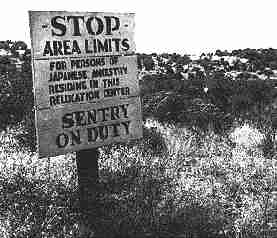
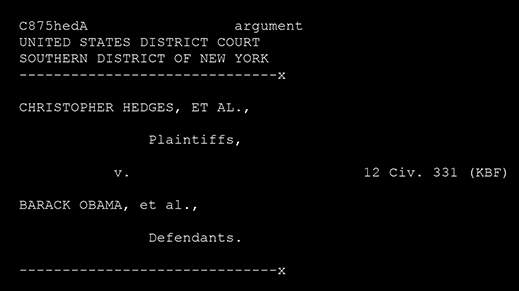
Challenging The National Defense Authorization Act of 2012
Last September a federal judge struck down part of the National Defense Authorization Act signed by President Obama that gave the government power to indefinitely detain anyone, anywhere in the world it considers to substantially support or be in associative force with terrorism. This includes US citizens. Judge Katherine Forrest of the Southern District of New York had ruled the indefinite detention provision of the National Defense Authorization Act likely violates the First and Fifth Amendments of U.S. citizens.
Attorney Carl Mayer:
- Some people call it (NDAA) the Homeland Battlefield Act because it treats the United States as a battlefield and allows the military to exercise power over civilians which is antithetical to our democracy and to our 200 years of Constitutional precedence.
- In May of 2012, we after a trial before Katherine Forrest who’s a federal judge in the Southern District of New York we achieved a preliminary injunction. That was then appealed but the appeal would stay pending a trial on a permanent injunction and on September 12, 2012, Judge Forrest issued a permanent injunction against the NDAA.
- The NDAA was stopped between May 16, 2012 and December 12, 2012.
- However, once that happened, the Obama Administration went into overdrive and immediately appealed that to the Second Circuit and asked for a stay of Judge Forrest’s order pending appeal.
- That stay lifted Judge Forrest’s injunction unfortunately the NDAA of 2012 now operates.
- In their papers, the government promised our clients would not be touched under the NDAA and they seemed to imply that no one in their (clients) position would be touched under the NDAA.
- StopNDAA.org
- People can go there and read Judge Forrester’s 112 page opinion and all the documents from the case.
- What’s at stake is the liberty and the right to free speech of all journalists and all activists and indeed any citizen of the United States of America.
- Because the military has never had the power to detain civilians.
- The only exception to that was during World War 2 when Japanese-Americans were interred in prison camps.
- There’s not right to a trial by jury, there’s no right to an attorney. This an authoritarian measure.
- I would venture to guess your hosts and co-hosts are on a list somewhere.
- Chris Hedges for example was a correspondent for several years that covered not only al-Qaeda but 17 other groups that are one the State Department Terrorism List
- He testified that he had a reasonable fear that the NDAA could put him in jeopardy.
- You know as attorneys what’s incredible about this law is there’s no definitional section.
- It doesn’t define what associated forces are. It doesn’t define what substantially supportive means.
- Chris Hedges was detained by the military for leaving the press pool in Iraq.
- Now the NDAA allows these detentions “until the end of hostilities.”
- It really is a heinous statute.
- We lost the stay but we got an expedited appeal.
- The briefing is complete and we’re waiting for an oral argument date.
- The government has two moves, they say whoever brings the suit has no standing, then if it gets past that point they say, sorry the state’s secrets doesn’t allow you to have discovery here.
- Attorney General Holder stated that Americans are entitled to due process but that doesn’t necessarily means judicial process.
- It takes the view that “during war time” that the judiciary has no role to play.
- The NDAA is the culmination of 10 years of anti-civil liberties measures.
Guest – Attorney Carl Mayer runs the Mayer Law Group LLC and is the author of several books including “Shakedown” and “Public Domain, Private Dominion.” Carl Mayer is a former law professor and served as special counsel to the New York State Attorney General.
——————————————————————————
Afghanistan War, CIA Sponsored Terror, Civil Liberties, Criminalizing Dissent, Extraordinary Rendition, FBI Intrusion, Habeas Corpus, Human Rights, Iraq War, Military Tribunal, Political Prisoner, Prison Industry, RFID, Surveillance, Targeting Muslims, Torture, Truth to Power, War Resister
Podcast: Play in new window | Download
Updates:
——

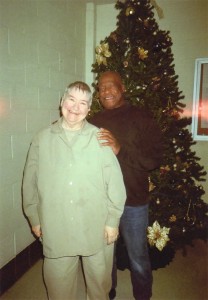
Political Prisoner Lynne Stewart – December 2012 Update
Criminal defense attorney, political prisoner and good friend, Lynne Stewart continues to inspire people around her while serving a 10 year sentence at the Federal Medical Center in Fort Worth Texas. As many listeners know, Lynne was convicted on charges related to materially aiding terrorism, related to her representation of Omar Abdel Rahman. Her original 2 year sentence was increased to 10 years after the government pressured the trial judge to reconsider his sentencing decision.
Co-host Michael Smith reads a few paragraphs from a recent letter by Lynne. Lynne Stewart turned 73 this past October, she’s a breast cancer survivor and has recently come out of surgery. She says she’s feeling better and ready to take on the next step in her case.
“I am now beginning my fourth (4th) year of imprisonment. It does not get better and I have to gut check myself regularly to be certain that I am resisting the pervasive institutionalization that takes place. A certain degree of reclusiveness with the help of good books, interesting people to correspond with, writing on topics of public interest, seems to work for me. Of course I still am working with any woman who needs help but I know that my sometimes truth-telling self is not what folks here want to hear. I do try to give folks whatever comfort I can. An old timer here, 18 years in, has begun an initiative to mobilize for prison reform by getting people on the outside to sign off on her well written petition to the White House. She is straight out of the courage and style of the old southern civil rights struggle but has now dedicated herself to this. The demands are modest. I have placed her petition on this, my website. Please sign on.”
Guest – Ralph Poynter, activist and Lynne’s partner. Please write to Lynne Stewart: #53504-054 / Federal Medical Center, Carswell / PO Box 27137 / Ft. Worth, TX 76127
——
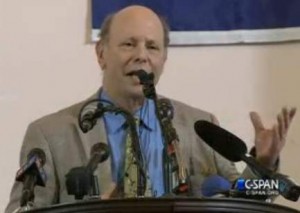
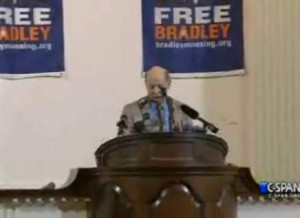
Michael Ratner Speech On Bradley Manning in Washington DC.
We hear a speech by our own Michael Ratner delivered at the Bradley Manning support event. Michael Ratner, President Emeritus of the Center for Constitutional Rights, who represents WikiLeaks and Julian Assange. Attorney David Coombs also speaks about the case of his client, Bradley Manning. He is preceded by Emma Cape of the Bradley Manning Support Network. The event was held at All Souls Church Unitarian in Washington DC, December 2012.
—————————————————–
Afghanistan War, CIA Sponsored Terror, Civil Liberties, Criminalizing Dissent, Extraordinary Rendition, FBI Intrusion, Guantanamo, Habeas Corpus, Human Rights, Political Prisoner, Prison Industry, Prosecution of the Bush Administration, Supreme Court, Targeting Muslims, Torture
Podcast: Play in new window | Download
Updates:
——
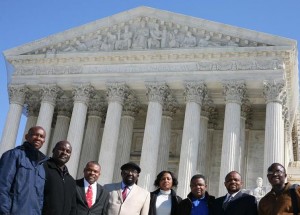
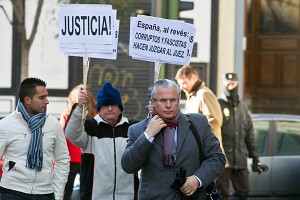
Universal Jurisdiction: Kiobel v. Royal Dutch Shell / Bush 6 Case In Spain
This week the US Supreme Court will decide if corporations could be held liable in U.S. courts for violations of international human rights law in the land mark case Kiobel v. Royal Dutch Petroleum. The case was brought by families of seven Nigerians who were executed by a former military government for protesting Shell’s exploration and development and is pushing to hold corporations accountable for human rights violations. The Supreme Court will also consider how the Alien Tort Statute Claim can be used the Kiobel case. A one sentence law that goes back to 1789 when the first judiciary act was brought in the United States. We’ve discussed this statute with several past guests including attorneys Peter Weiss and Rhonda Copeland who were instrumental in beginning the first cases in which human rights violations, taking place in other countries could actually be litigated in the United States.
We also discuss the recent amicus filing by a group of international human rights organizations and experts before the Spanish Supreme Court. The brief asks the Spanish Supreme Court to overturn a decision not to pursue a criminal case against six former officials from the Bush administration for their role in directing and implementing a systematic torture program. Past shows with Katherine Gallagher.
Attorney Katherine Gallagher:
- The Kiobel case has been in US courts since 2004.
- The claims were brought in the Southern District of New York, under a law from 1789, known as the Alien Tort Statute.
- This law allows non-US citizens to come into a US federal court and assert violations of the Laws of Nations or International Law.
- A recent precedence for this is Citizens United, what happened was that the Second Circuit ruled that corporations could not be held liable for these egregious human rights violations under the Alien Tort Statute.
- The question of corporate liability went up to the Supreme Court first.
- We had 2 judges from a 3 bunch panel in the Second Circuit suddenly come out in the fall of 2009 and say there is no corporate liability. That is the question that went up to the Supreme Court.
- Four other circuits had look at this question and they said of course corporations can be held as liable as an individual, a natural person.
- The Alien Tort Statute allows for a civil suit and civil liability rather than criminal liability.
- The key case from 1980 that CCR brought, the case of Filartiga, this case which the Supreme Court affirmed in 2004 as being on solid legal basis, claims by a Paraguayan, against a Paraguayan for actions that occurred in Paraguay.
- So its very strange that the Supreme Court was asking in a very broad fashion whether the ATS could apply to actions that occurred in another country. That is what the bulk of the cases brought under the ATS have been about.
- Some of the cases where the ATS is used are for some of the most serious violations. Cases of war crimes, crimes against humanity, torture, not your run of the mill case.
- What the justices seem to coalesce around was the issue of whether there’s an alternate forum. If the claims against Shell could have been brought in the UK or in the Netherlands, maybe they don’t need to be brought in the US.
- We’ve seen a trend in the last 20 years of other countries adopting stronger laws that allow for redress, and accountability, so we don’t have to be the world’s policeman.
- There have been 2 cases that percolated up in the last 4 years in Spain.
- The first is a widespread investigation of the torture program then Judge Balthazar Garzon. This is a case looking at torture in Guantanamo, and potentially in Iraq and Afghanistan, looking at the whole U.S. torture program. That case was brought on by 4 named plaintiffs.
- That case is very wide ranging, and willing to go up the chain of command as far as the evidence leads.
- There is a second case that was brought against specific U.S. individuals. They’re known as the Bush 6, including, Jay Bybee, John Yu, David Addington, Alberto Gonzalez. Six men who served as lawyers and argued to have essentially created both the legal structure that enabled the torture program, providing arguements for immunity and protecting participants of the torture program from accountability.
- Spain has a long and proud history of upholding International Law. Spain is where we had the case against Augusto Pinochet in the late 90s.
- We’ll be doing this as long as we need. We need to have accountability, its really critical.
Guest – Katherine Gallagher, Senior Staff Attorney at the Center for Constitutional Rights (CCR), where she focuses on holding individuals, including US and foreign government officials, and corporations, including private military contractors, accountable for serious human rights violations. Among the cases she has worked, or is working, on are international accountability efforts for U.S. officials involved in torture (Spain, Switzerland, Canada); ICC Vatican Officials Prosecution; Arar v. Ashcroft, Corrie v. Caterpillar, Matar v. Dichter, Saleh v. Titan, Al-Quraishi v. Nakhla and L-3, Estate of Atban v. Blackwater.
—————————————————————————————————
CIA Sponsored Terror, Civil Liberties, Guantanamo, Habeas Corpus, Human Rights, Political Prisoner, Prison Industry, Targeting Muslims, Torture, Truth to Power
Podcast: Play in new window | Download
Updates:
- US Refuses To Extradite Former Bolivian President
- Jose Padilla Re-Sentencing
- Ward Churchill Case Update – Are University Board of Regents Immune?
- Armenia Protests Extradition of Axe Murderer
——

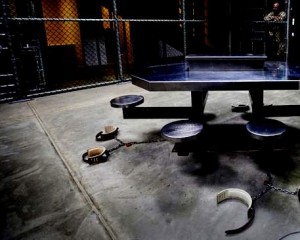

Department of Defense Declassifies Report on Alleged Drugging of Detainees
Hosts discuss a recently declassified report on alleged drugging of Guantanamo detainees with Attorney Shane Kadidal.
Guest – Attorney Shane Kadidal, senior managing attorney of the Guantánamo Global Justice Initiative at the Center for Constitutional Rights in New York City. He is a graduate of the Yale Law School and a former law clerk to Judge Kermit Lipez of the United States Court of Appeals for the First Circuit. In his eight years at the Center, he has worked on a number of significant cases in the wake of 9/11, including the Center’s challenges to the detention of prisoners at Guantánamo Bay (among them torture victim Mohammed al Qahtani and former CIA ghost detainee Majid Khan), which have twice reached the Supreme Court, and several cases arising out of the post-9/11 domestic immigration sweeps.
——
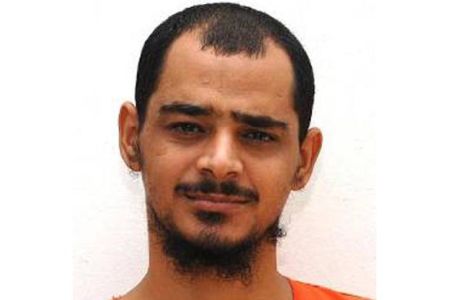
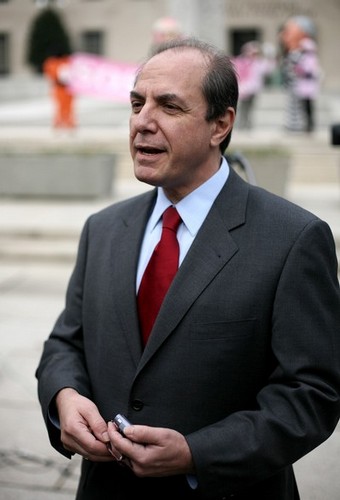
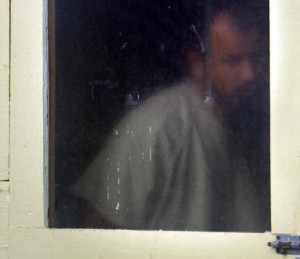
Adnan Latif – the Face of Indefinite Detention – Dies at Guantánamo
A prisoner held at Guantanamo Bay Naval Base since 2002 died last week. Adnan Farhan Abdul Latif was a 32 year old from Yemen who was allegedly suicidal and mentally ill. Latif won a U.S. court order for his release but it was overturned on appeal. In 2009, President Obama imposed a moratorium on Guantanamo prisoners from Yemen after a Yemeni trained Nigerian was found with a bomb in his underwear on a Detroit bound plane in 2009. Latif is the ninth prisoner to die at Guantanamo Bay prison.
Attorney David Remes:
- We decided to put out a statement by the lawyers. We wanted to call his family but the government said let the ICRC do it.
- He was approved in 2004, he was approved in 2007, and approved in 2009 for transfer out of Guantanamo.
- Adnan filed a habeas corpus petitions in 2004. In 2008 those cases began to move forward, Adnan was among them. He won his habeas case. The whole case against him hinged on an intelligence report that the district court judge said was unreliable. The case was appealed by the Obama Administration.
- He was a very sweet man, he was small, he was thin.
- He was very sensitive and a fine poet. He felt everything more keenly, perhaps more keenly than any of the other detainees.
- He felt that his spirit was being crushed. That he was always being roughed up by the guards. He was on long hunger strikes, he was held in isolation for the majority of his time in Guantanamo.
- He was mentally very fragile.
- At one point in my representation of him in 2009, he slit his wrists as I was speaking with him . . by chipping formica from under the table and cutting into his vein let the blood drip into a little cup and then threw his blood on me.
- I took an inventory of his various bumps, bruises and swellings. It was almost like a doctor’s visit.
- He was a small guy.
- He could be very lucid, he was very intelligent.
- You just have to question the NCIS reports from the beginning.
- Whatever the conclusions that were announced it was Guantanamo that killed Adnan. It ruined his health, it ruined his spirit, it may have led him to suicide.
Guest – Attorney David Remes, a human rights lawyer who has been deeply involved in the litigation on behalf of Guantanamo prisoners since 2004. He represents 16 Yemenis and has made several visits to Yemen to press for his clients’ release and brief their families. He was among the first lawyers to visit Guantanamo after the Supreme Court ruled in Rasul v. Bush in 2004 that the prisoners had a right to legal counsel.
————————————————————————–
CIA Sponsored Terror, Civil Liberties, Habeas Corpus, Human Rights, Iraq War, Military Tribunal, Prison Industry, Supreme Court, Torture
Podcast: Play in new window | Download
Updates:
- Michael Ratner: Update on Julian Assange
—-
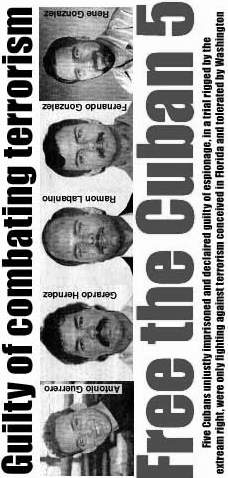
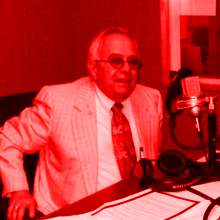
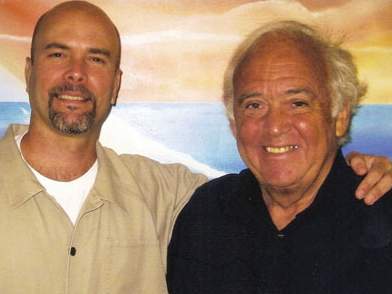
Attorney Martin Garbus and the Cuban Five
Earlier this summer we talked with renowned First Amendment and civil rights attorney Martin Garbus about joining the Cuban Five’s legal defense team. He recently filed an affidavit in the Miami Federal District Court based on US government misconduct of paying Miami journalists during the Cuban Five’s prosecution 14 years ago. As many listeners may know, these paid reporters covered the Cuban Five case in an almost hysterical fashion. The affidavit supports Cuban Five defendant Gerardo Hernández’ habeas corpus appeal and seeks the overturning of his wrongful conviction.
Attorney Martin Garbus:
- We’re saying that every person involved in the payments, the government, Radio Marti, the persons who received the payments. The journalists also violated the law.
- I think it is jury tampering. We’re saying that every dollar that was paid is a violation of the integrity of a jury trial. There were many millions of dollars.
- We’re saying that the jury trial was destroyed by a propaganda machine.
- The government then says, well you have to prove that. There are several different allegations.
- There is Radio Marti. In 1996, just about the time of the shoot down Radio Marti moves from Washington to Miami.
- It’s the only Voice of America station if you will that doesn’t operate out of Washington.
- It shows that the government was willing to give the Cuban exiles control over Radio Marti.
- In 1996, its recognized that Radio Marti is totally internal to effect the Cuban exile population in Miami.
- They then go to the newspapers, the Miami Herald, the Nuevo Herald and they (Radio Marti) start to give those journalists money.
- We filed an 80 page affidavit with hundreds of pages of exhibits.
- We’ve gone through relentlessly of payments made by Radio Marti by the government to journalists. We’ve come up with 11 journalists who have received close to a million dollars.
- The articles that they wrote should be read fairly carefully.
- They make the argument that the people who are being tried in the case were the early landing force for a Cuban invasion.
- American money is being given to writers who are then attacking America which has prosecuted people who have killed Americans. We’re trying to vacate the conviction.
Guest – Attorney Martin Garbus, one of the country’s leading trial lawyers. He has appeared before the United States Supreme Court and the highest state and federal courts in the nation. Time Magazine has named him “legendary . . . one of the best trial lawyers in the country.” He’s also known as the most prominent First Amendment lawyer.
—–


Washington DC Court Ruling on CO2
In April 2007, the US Supreme Court handed down its first decision related to climate change issues. The case was Massachusetts v. EPA and the high Court held that the Clean Air Act authorized the Environmental Protection Agency to regulate greenhouse gas emissions IF the agency determined that these emissions posed a danger to human health and welfare. The EPA did in fact make such an “endangerment” finding, and then proceeded to begin the process of adopting regulations to limit greenhouse gas emissions.
The initial lawsuit was brought by the Coalition for Responsible Regulation, which includes a range of petroleum-based industries, and supported by several states, including Texas, Alabama, Georgia, Nebraska, North Dakota, South Carolina, and Virginia. The EPA, on the other hand, was joined by California, New York, Delaware, Iowa, Maryland, Illinois, Maine, Massachusetts, New Mexico, Oregon, Vermont, Rhode Island, Washington and New York City. These three rules were challenged on various grounds – in the end the Court upheld the EPA’s action and resoundingly affirmed the agency’s authority and obligation to regulate greenhouse gas emissions.
Law Professor Eleanor Stein:
- Rolling Stone: The New Math of Green House Gas and Warming.
- Greenhouse gases are chemical substances, usually referred to a basket of six which contribute to the warming of the Earth because as they accumulate in the atmosphere they prevent the refraction of the Sun’s energy away from the Earth and back into space.
- Of these six substances the one often discussed is carbon dioxide which is the most plentiful, methane is among the most potent. Recent court case – The Coalition For Responsible Regulation Against the EPA – it was decided in the D.C. circuit a month ago.
- The Massachusetts case at the Supreme Court was about specifically regulation of emissions from new motor vehicles.
- Once the court ordered the EPA to do its endangerment investigation, it did so and made an endangerment finding in 2009. It found that greenhouse gas emissions were a danger to human health and welfare.
- The EPA was then required to regulate emissions of new motor vehicles. They did that adopting a set of rules known as the Tailpipe Rules.
- The EPA went on to adopt a set of rules for stationary sources ie, coal powerplants, those rules are known as the Timing and Tailoring Rules.
- Endangerment Finding / Tailpipe Rule / Timing and Tailoring Rule
- The current ruling of the D.C. court upholding the three rules – is a tremendous affirmation of current climate science, its a rejection of a lot of climate denial and other industry.
- The most extensive discussion is their analysis of the Endangerment Finding, which is the EPA’s analysis of the climate science.
- The Tailpipe Rule went into effect January 1, 2011. This will make a contribution to reducing emissions.
Guest – Law professor Eleanor Stein teaches a course called the Law of Climate Change: Domestic and Transnational at Albany Law School and SUNY Albany, in conjunction with the Environmental and Atmospheric Sciences Department at SUNY.
—–
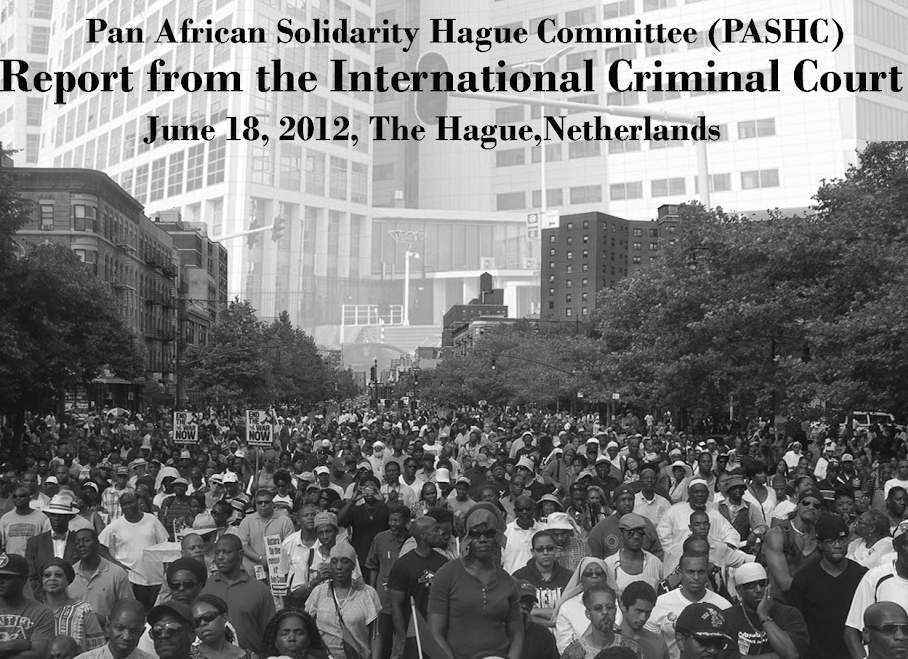

Pan African Solidarity Hague Committee Serves The ICC
In June of this year, the Pan-African Solidarity Hague Committee delivered a petition to the International Criminal Court at the Hague, Netherlands demanding they prosecute the United States, Great Britain, France, Italy, Canada, and NATO for war crimes and crimes against humanity in Libya, Cote d’lvoire, Haiti and the US. This campaign began in May of last year when thousands gathered to protest the US/NATO bombing of Libya, attacks on Zimbabwe and the racist assault against African-Americans in the United States. The evidence presented made a prima facie case of crimes committed and was the basis of the petition served this year.
Attorney Roger Wareham:
- The United States was very involved in the process of setting up the ICC.
- There are approximately 116 countries that have signed on at this point. Which means there are about one third of the countries in world who have not signed on.
- After 10 years the court came forward with its first conviction. It was a citizen of the Democratic Republic of Congo convicted of crimes against humanity.
- It’s record has been really a court to prosecute Africans.
- Of the cases that are in front of it now, all of them are Africans.
- It’s as if people who’ve violated human rights don’t exist outside the African continent.
- As one observer had said this is really an African criminal court and not an international criminal court.
- With the international criminal court, non governmental organizations can bring charges, bring communications saying we think there’s enough evidence to begin an investigation and prosecute.
- The ICC had taken out a warrant against Khaddafi saying he was a human rights violator, committed crimes against humanity, war crimes.
- In May 2011 when it was clear they were trying to effect regime change and assassinate Colonel Khadaffi we began a campaign to expose that. We saw the same pattern in terms of what happened to President Aristides in 2004.
- After the August 2011 rally we had the people’s tribunal in January 2012.
- In June 2012 we hand delivered the petition to the ICC. We asked to speak to the chief prosecutor. She declined to meet with us for some reason.
- They don’t want to deal with prosecuting anybody from the West.
- A communication was brought to the ICC for the war crimes from Operation Cast Lead. Two years later the ICC declined the petition. I think their technicality was Gaza wasn’t a state.
- There is a campaign by the West to re-colonize the African continent for its resources, to remove those heads of state that are obstacles Western re-penetration.
Guest – Attorney Roger Wareham, a member of the December 12th Movement, an organization of African people which organizes in the Black and Latino community around human rights violations, particularly police terror. Wareham is also the International Secretary-General of the International Association Against Torture (AICT), a non-governmental organization that has consultative status before the United Nations.
———————————————————————-


























